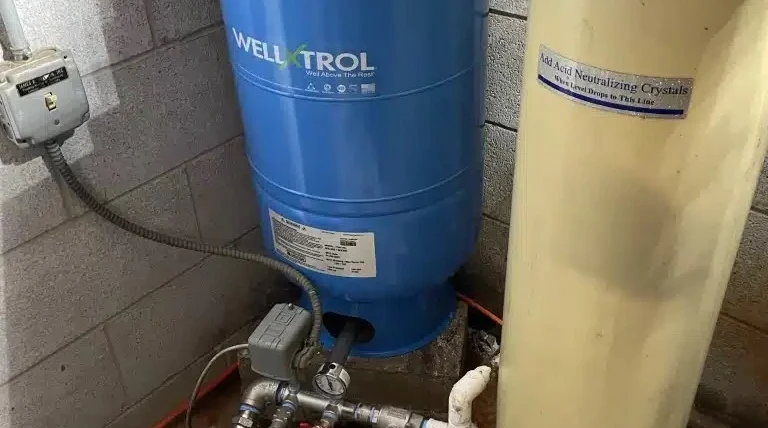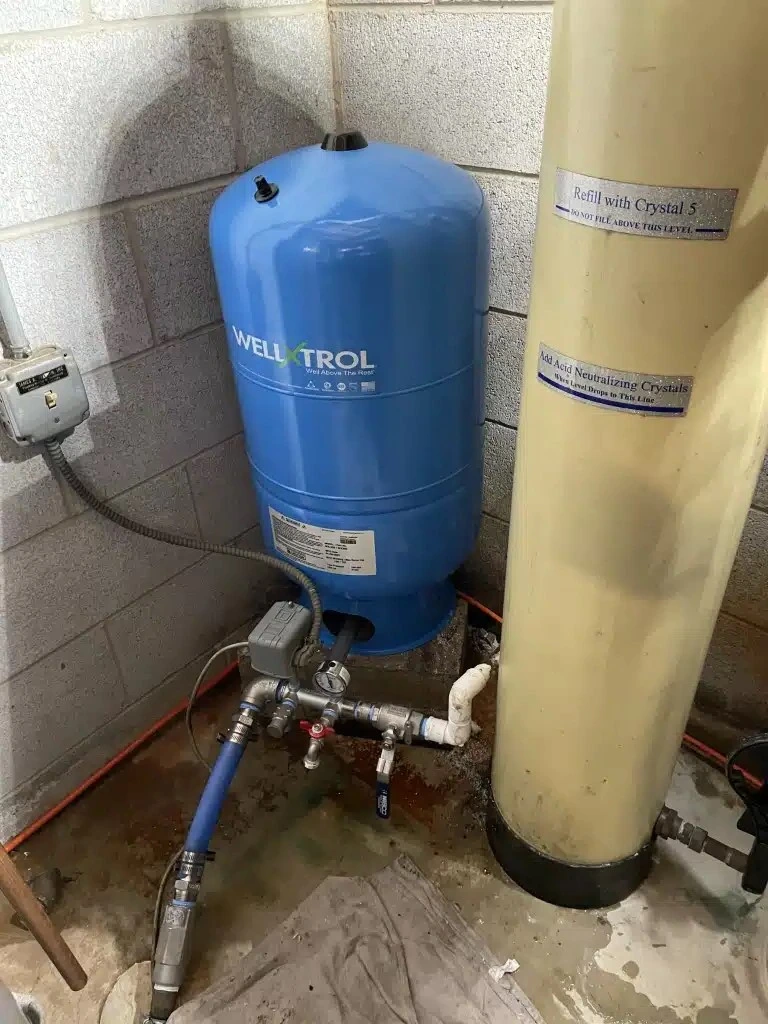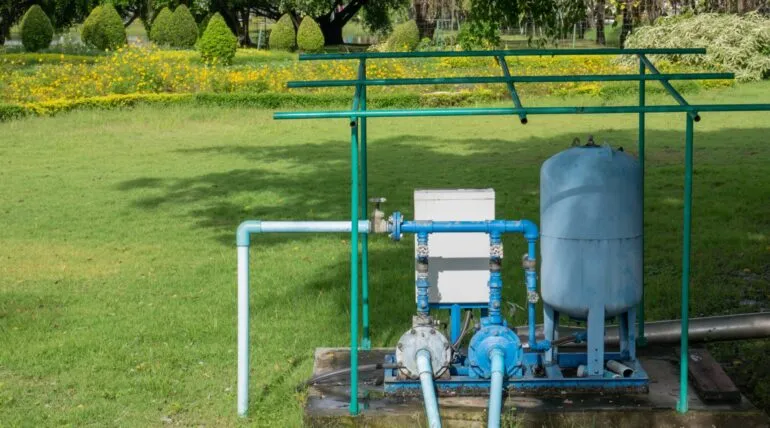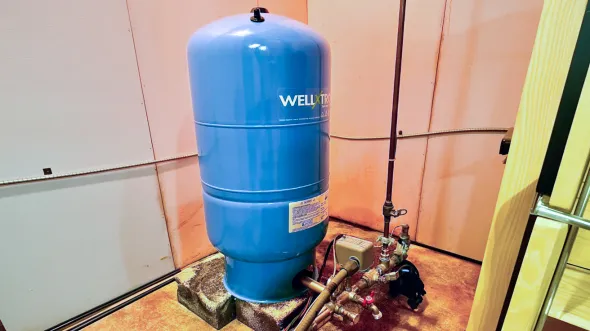
For thousands of homeowners across Berks County, Pennsylvania, access to clean, reliable water doesn’t come from city lines—it comes directly from private wells. From Temple to Sinking Spring, Wyomissing to Birdsboro, Douglassville to Fleetwood, Kutztown, and Boyertown, well water systems power everything from drinking water and cooking to showers, laundry, and irrigation.
If you rely on a well, two components make that water delivery possible: the well pump and the well tank. Although often mentioned together, these are not the same thing. Understanding the difference between a well pump and a well tank helps homeowners better maintain their systems, recognize early signs of failure, and avoid costly emergency breakdowns.
What Is a Well Pump?
At its core, the well pump is the heart of your private water system—it’s the equipment responsible for lifting water from the ground and pushing it into your home.
Types of Well Pumps (Submersible, Jet Pumps)
- Submersible pumps: Installed deep inside the well, often hundreds of feet underground. They are energy-efficient, quiet, and common in many East Pennsylvania homes with deeper wells.
- Jet pumps: Typically located above ground and best suited for shallow wells (25–50 feet deep). They are easier to service but may require more frequent maintenance compared to submersibles.
How a Well Pump Works
Imagine a straw pulling liquid from a glass—that’s essentially what your pump does, only on a much larger scale. It creates suction or pressure to move water from underground aquifers into your plumbing system. Without it, water would never leave the well.

What Is a Well Tank?
While the pump delivers water, the well tank acts as a storage and regulation system. It ensures steady water pressure in your home and prevents your pump from constantly turning on and off.
Pressure Tank Basics
The most common type is the pressure tank, which stores a set amount of water and uses compressed air to regulate flow. For example, if your tank is set to 40–60 psi (pounds per square inch), the pump fills the tank until pressure reaches 60 psi, then shuts off. Once you use water and pressure drops to 40 psi, the pump kicks back in.
How a Well Tank Helps Prevent Pump Overload
Think of the tank as a “middleman.” Without it, your pump would need to switch on every single time you turned on a faucet—even for something as small as rinsing a toothbrush. That kind of workload would quickly burn out the pump. The tank reduces wear and tear, extending pump life and providing consistent water pressure.
Key Differences Between Well Pumps and Well Tanks
While pumps and tanks work hand in hand, they play very different roles in your water system.
Function Comparison: Pump vs. Tank
- Pump = Pulls water out of the ground
- Tank = Stores water and regulates pressure for delivery
Lifespan and Maintenance Needs
- Well pumps: Typically last 8–15 years, depending on usage and water quality. Submersible pumps tend to last longer than jet pumps.
- Well tanks: Generally last 7–12 years, but lifespan can be shortened by high iron content or poor water quality.
Costs and Energy Efficiency
- Pump replacement: In Berks County, well pump replacement costs usually range from $3,000–$10,000, depending on depth and type.
Tank replacement: A new pressure tank typically costs $2,000–$4,000, including installation.
The tank is a smaller investment, but without it, the pump would run more often, spiking electricity bills and shortening pump life.
Why Both Are Essential for Your Home’s Water System
A pump without a tank means constant cycling. A tank without a pump means no water supply. Together, they:
- Ensure reliable, steady pressure for showers, washing machines, and dishwashers.
- Reduce strain on mechanical parts, lowering repair costs.
- Provide backup storage (many tanks hold 20–40 gallons) so your system doesn’t feel every on-off cycle.
Simply put, one can’t do the job effectively without the other.

Common Issues With Well Pumps and Tanks
Just like any mechanical system, pumps and tanks develop problems over time. Recognizing the signs early can save you from expensive emergencies.
Signs of a Failing Well Pump
- Intermittent water supply or no water at all
- Low water pressure throughout the house
- Spitting air from faucets
- Pump running continuously (never shutting off)
- Sudden rise in electric bills
Signs of a Failing Well Tank
- Rapidly fluctuating water pressure
- Waterlogged tank (tank feels heavy and full, even when it shouldn’t)
- Clicking or short-cycling sounds near the tank
- Visible rust or leaks on the tank’s body
When to Repair vs. Replace
- Minor issues like pressure switch adjustments may only require repairs.
If your pump is 10+ years old or the tank is leaking, replacement is usually more cost-effective.

Professional Well Services in East Pennsylvania
For families relying on private wells, professional maintenance is critical to system health and water safety.
Areas We Serve
At Berks Plumbing Specialist, we proudly serve homeowners throughout Berks County, including Temple, Sinking Spring, Wyomissing, Birdsboro, Douglassville, Fleetwood, Kutztown, and Boyertown.
Importance of Regular Well Maintenance
- Annual inspections catch small problems before they lead to costly breakdowns.
- Pressure checks ensure your tank is properly balanced.
Pump flow tests verify your system is delivering water efficiently.
Neglecting these steps can mean the difference between a $150 service visit and a $3,000 emergency replacement.
Why Choose Berks Plumbing Specialist for Well Pump and Tank Services
When it comes to well water systems, experience matters. At Berks Plumbing Specialist:
- We have years of hands-on expertise with local well profiles and geology unique to Berks County.
- We provide both emergency repairs and scheduled maintenance.
- Our team is trained to handle well pump replacement, well water tank repair, and pressure tank replacement with precision.
- We understand the urgency—when your well system fails, life at home grinds to a halt. That’s why we prioritize quick response times.
Conclusion: Keeping Your Home’s Water Supply Reliable
In East Pennsylvania, where thousands of families rely on private wells, knowing the difference between a well pump and a well tank isn’t just plumbing jargon—it’s essential knowledge for protecting your water supply.
The pump pulls water from deep underground, while the tank stores and regulates it for smooth household use. Both are critical, and both require regular attention to keep your showers hot, your laundry fresh, and your kitchen running without interruption.
If you live in Temple, Sinking Spring, Wyomissing, Birdsboro, Douglassville, Fleetwood, Kutztown, or Boyertown and notice low pressure, spitting faucets, or strange noises from your system, don’t wait for a complete failure. Call Berks Plumbing Specialist for reliable well water pump replacement, well tank repair, and full-system maintenance.
Your home’s water system deserves the same care as any other essential utility—because when it runs smoothly, so does your daily life.
Frequently Asked Questions
1. Do I Need to Replace My Well Pump and Tank Together?
Not always. If your pump is still in good condition but your tank is failing, you can replace just the tank—and vice versa. However, if both are 10+ years old, replacing them together can save on labor costs and reduce future breakdown risks.
2. How Long Does a Well Tank Last in Pennsylvania?
Most well tanks in Berks County last 7–12 years. Hard water, high iron content, or improper pressure settings can shorten this lifespan. Annual inspections are key to maximizing tank life.
3. Can I Run My Well System Without a Tank?
Technically yes—but it’s not recommended. Without a tank, your pump would switch on every time you used even a drop of water, leading to rapid wear, higher energy bills, and likely pump failure within a short time.
